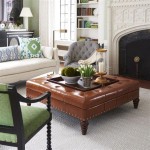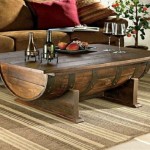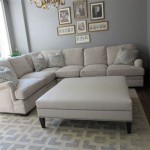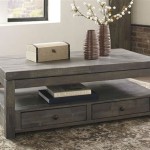Everything You Need to Know About Antique Wood Coffee Tables
Antique wood coffee tables offer a unique blend of functionality and historical significance. They are more than just a place to rest a cup of coffee; they are conversation starters, design focal points, and tangible links to past eras. Understanding the nuances of antique wood coffee tables, from different styles and wood types to identifying authenticity and assessing value, is essential for collectors, decorators, and anyone seeking to add a touch of timeless elegance to their living space.
The appeal of antique wood coffee tables lies in their unique character. Mass-produced modern furniture often lacks the craftsmanship and individuality of older pieces. Antique tables, on the other hand, often bear the marks of their age: subtle imperfections, unique wood grain patterns, and details that reflect specific historical movements. These characteristics contribute to their inherent charm and the story they tell.
Identifying Styles and Periods
Identifying the style and period of an antique wood coffee table is crucial in determining its value and historical significance. Understanding the design characteristics associated with different eras allows for a more informed appreciation of the piece and its place in furniture history. Some of the most common periods and styles include:
Early American (17th-18th Century): Tables from this era are often characterized by their simple, functional designs. Materials are typically native hardwoods such as maple, oak, and pine. The style is often utilitarian, reflecting the practical needs of early settlers. Features may include turned legs, simple aprons, and a minimal amount of ornamentation.
Queen Anne (1700s-1750s): This style is known for its elegant curves and cabriole legs, often ending in pad feet. The use of walnut and cherry became more prevalent during this period. Ornamentation is still relatively restrained but more refined than earlier styles. Emphasis is placed on graceful lines and overall visual harmony.
Chippendale (1750s-1790s): Named after the English furniture maker Thomas Chippendale, this style is characterized by a diverse range of influences, including Gothic, Rococo, and Chinese motifs. Legs can be straight or cabriole, and ornamentation is more elaborate, often featuring carvings and pierced fretwork. Mahogany became a popular wood choice during this period.
Federal (1780s-1820s): This American style, inspired by classical architecture, is known for its clean lines, symmetry, and refined elegance. Common features include tapered legs, inlaid designs, and contrasting veneers. Mahogany, satinwood, and maple were frequently used. The overall aesthetic is one of restrained sophistication.
Victorian (1837-1901): Victorian furniture is characterized by its ornate details, heavy ornamentation, and use of dark woods like mahogany and rosewood. Styles varied widely within the Victorian era, including Gothic Revival, Renaissance Revival, and Rococo Revival. Tables from this period may feature elaborate carvings, turned legs, and marble tops.
Arts and Crafts (1880-1920): This style emphasizes handcrafted quality, simple designs, and natural materials. Oak is a common wood choice, and ornamentation is typically minimal, often featuring exposed joinery and hammered metal accents. The Arts and Crafts movement sought to reject mass-produced goods and promote a return to traditional craftsmanship.
Art Deco (1920s-1930s): Art Deco furniture is characterized by its geometric shapes, bold colors, and luxurious materials. Common features include streamlined designs, exotic veneers, and mirrored accents. Materials like chrome, bakelite, and lacquer were also frequently used to create a sleek and modern aesthetic.
Wood Types and Their Characteristics
The type of wood used in an antique coffee table significantly impacts its durability, appearance, and value. Different woods possess unique characteristics, influencing their suitability for various furniture styles and their resistance to wear and tear. Understanding the common wood types used in antique furniture construction is essential for both identification and preservation.
Mahogany: Prized for its rich color, fine grain, and durability, mahogany was a popular choice for high-end furniture from the 18th century onwards. It is relatively easy to work with and polishes to a beautiful luster. Mahogany is resistant to rot and insect damage, making it a long-lasting material.
Oak: Known for its strength and durability, oak was a common choice for furniture throughout history. Its distinctive grain pattern adds visual interest, and it can be stained in a variety of colors. Oak is a dense and heavy wood, making it suitable for sturdy furniture pieces.
Walnut: With its warm brown color and attractive grain, walnut was a popular choice for furniture in the 18th and 19th centuries. It is a strong and stable wood that is easy to carve and polish. Walnut is considered a premium wood, and antique furniture made from walnut often commands higher prices.
Maple: A hard and durable wood, maple was frequently used in early American furniture. It has a light color and a fine grain, making it suitable for painted or stained finishes. Maple is resistant to dents and scratches, making it a practical choice for everyday use.
Pine: A softwood that is relatively inexpensive and easy to work with, pine was often used for less formal furniture pieces. It has a light color and a knotty grain pattern. Pine is susceptible to dents and scratches, but its affordability made it a popular choice for utilitarian furniture.
Cherry: With its reddish-brown color and smooth grain, cherry was a popular choice for furniture in the 18th and 19th centuries. It is a strong and stable wood that is easy to carve and polish. Cherry darkens with age, adding to its visual appeal.
Assessing Authenticity and Condition
Determining the authenticity and condition of an antique wood coffee table is crucial before making a purchase. A careful examination can reveal valuable information about its age, origin, and overall value. Look for signs of wear, construction techniques, and any repairs or alterations that may have been made over time.
Construction Techniques: Examine the joinery used to construct the table. Hand-cut dovetails, mortise and tenon joints, and other traditional woodworking techniques are indicative of older pieces. Mass-produced furniture often features machine-made joints that lack the precision and character of handcraftsmanship.
Hardware: Original hardware, such as hinges, pulls, and knobs, can provide clues about the age and style of the table. Look for signs of wear and patina that are consistent with the age of the piece. Replacement hardware can diminish the value of an antique table.
Patina: Patina is the surface sheen that develops on wood over time due to oxidation and handling. A natural patina is a sign of age and authenticity. Attempting to artificially create a patina can often be detected by an experienced eye.
Wear and Tear: Minor wear and tear, such as scratches, dents, and fading, are normal in antique furniture and can actually add to its character. However, excessive damage, such as cracks, warping, or insect infestation, can significantly reduce the value of the table.
Repairs and Alterations: Examine the table for any signs of repairs or alterations. While some repairs may be necessary to maintain the structural integrity of the piece, extensive or poorly executed repairs can detract from its value. Be wary of tables that have been heavily refinished or altered, as this can obscure their original features.
Provenance: Whenever possible, try to determine the provenance of the table. Knowing its history can add to its value and desirability. Information about previous owners, exhibitions, or publications can provide valuable insights into the table's origins and significance.
Antique wood coffee tables represent a valuable investment, both financially and aesthetically. Proper maintenance and care are essential to preserve their beauty and value for generations to come. Regular dusting with a soft cloth, avoiding direct sunlight and extreme temperature changes, and using appropriate furniture polishes are crucial steps in ensuring their longevity. Seeking professional advice from experienced furniture restorers when necessary can also help maintain the integrity of these historical pieces, ensuring they continue to enhance the ambiance of any home. Protecting your investment is essential for long-term enjoyment and value retention. Antique Wood Coffee Tables.

My Favorite Flea Market Find Antique Coffee Table Bless This Nest

Art Deco Coffee Table With Turned Spindle Legs Journey East

Victoria End Coffee Table Antique Walnut

Wooden Handmade Round Coffee Table Attractive Antique End Side Tabledecor

Coffee Tables In Singapore And Tips For Finding The Perfect One

Weaving Coffee Table Recycled Natural Approx 154cm Originals Furniture

Neuro Vintage Solid Wood Coffee Table Side 60d X 50 5h

Royal Solid Wood Home Living Room Antique Coffee Table Set Classic Made In China Com

Midcentury Coffee Table Journey East

Ibo Reclaimed Wood Coffee Table Natural
Related Posts








